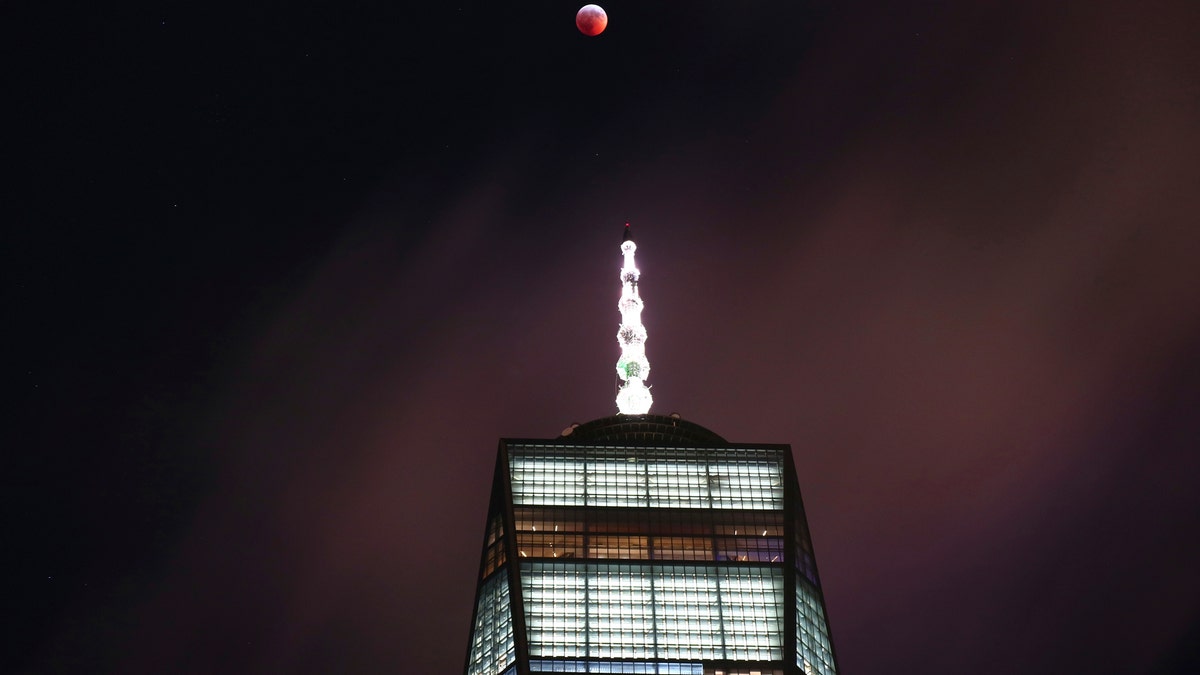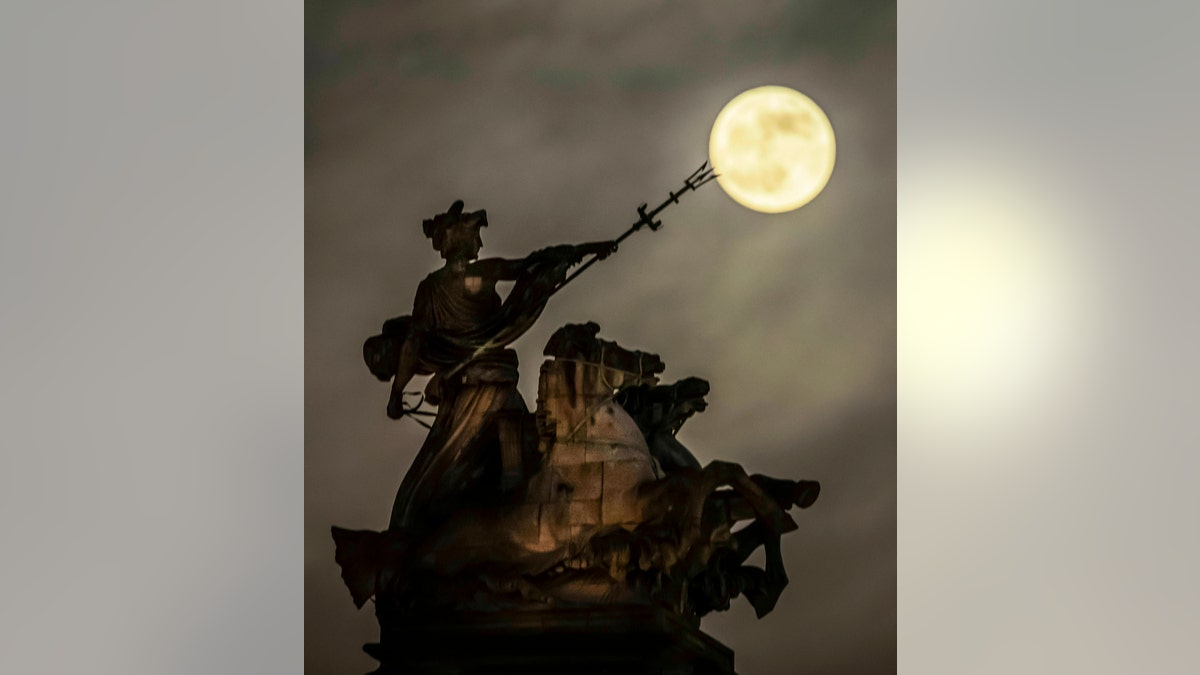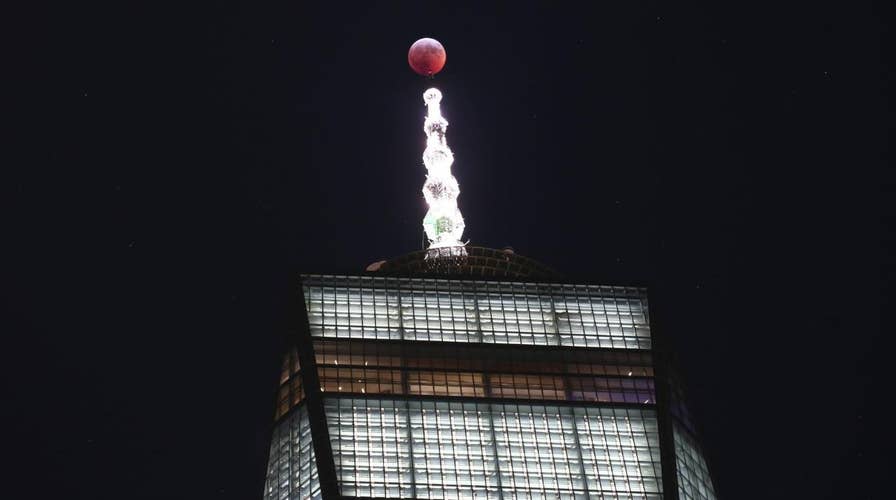Amazing pictures of the super blood moon
People from across the globe gazed in awe at 2019’s only total lunar eclipse that was called a super blood moon because of its huge size and reddish hue.
Skywatchers have been enjoying a rare ‘super blood Moon’ as the Earth’s natural satellite turned a stunning shade of red.
The celestial event, which is also this year’s only total lunar eclipse, generated plenty of buzz. “Visible for its entirety in North and South America, this eclipse is referred to by some as a super blood moon – ‘super’ because the Moon will be closest to Earth in its orbit during the full moon and ‘blood’ because the total lunar eclipse will turn the Moon a reddish hue,” explains NASA, in a statement.
The entire eclipse was also visible across the Atlantic to western and northern Europe.

A lunar eclipse progresses behind the "Monumento a la Carta Magna y Las Cuatro Regiones Argentinas" in Buenos Aires, Argentina, Monday, Jan. 21, 2019. (AP Photo/Natacha Pisarenko)
Across much of the globe, photographers pointed their cameras skyward to capture the rare event. In New York, for example, clusters of photographers braved sub-zero temperatures to capture the eclipse above the city’s famous skyline.
A total lunar eclipse occurs when the entire Moon enters Earth’s shadow. Earth’s atmosphere is responsible for the Moon’s color change during the eclipse. “As sunlight passes through it, the small molecules that make up our atmosphere scatter blue light, which is why the sky appears blue,” explains NASA, on its website. “This leaves behind mostly red light that bends, or refracts, into Earth’s shadow. We can see the red light during an eclipse as it falls onto the Moon in Earth’s shadow.”
CHINA’S LUNAR PROBE SNAPS FIRST PANORAMIC PIC OF THE FAR SIDE OF THE MOON
The phenomenon is also referred to as a “super wolf blood Moon.” According to the Old Farmer’s Almanac, the January full Moon was dubbed the “wolf” Moon by native Americans because it occurred at a time of year when wolves would be howling with hunger.

The super blood Moon visible above One World Trade Center in downtown Manhattan. (Gary Hershorn, Fox News)
The total lunar eclipse started at 11:41 p.m. EST on Jan. 20, with the moment of greatest eclipse occurring at 12:12 a.m. EST on Jan. 21, according to NASA. The total eclipse ended at 12:43 a.m. EST on Jan. 21.
Earth Sky notes that the next total lunar eclipse will not occur until May 26, 2021.
ASTRONAUT DESCRIBES WATCHING THE MOON LANDING WITH PRESIDENT NIXON IN THE WHITE HOUSE
As for full-moon supermoons, this will be the first of three this year. This supermoon is about 222,000 miles away. The Feb. 19 supermoon will be a bit closer and the one on March 20 will be the farthest.

A blood moon, set to be the last of its kind for two years, rises above the 'Maritime Prowess' by Albert Hemstock Hodge on the Guild Hall ahead of the Lunar Eclipse, in Hull, England, Sunday, Jan. 20, 2019.
CLICK HERE TO GET THE FOX NEWS APP
The longest total lunar eclipse of the 21st century occurred on July 27, 2018. The phenomenon lasted for 1 hour and 43 minutes and was mainly visible in Europe, Africa, Asia and Australasia, as well as some parts of South America.

This photo shows the moon during a total lunar eclipse, seen from Los Angeles, Sunday Jan. 20, 2019. (AP Photo/Ringo H.W. Chiu)
The Moon continues to be a source of fascination. China, for example, recently became the first country to successfully land a spacecraft on the far side of the Moon. In December a checklist that traveled to the surface of the Moon with Apollo 11 astronauts Neil Armstrong and Buzz Aldrin was sold at auction in New York for $62,500.

The super blood Moon photographed above One World Trade Center in Manhattan. (Gary Hershorn, Fox News)
2019 also marks the 50th anniversary of the historic Apollo 11 Moon landing.
The Associated Press and Fox News’ Jennifer Earl contributed to this article.
Follow James Rogers on Twitter @jamesjrogers




















